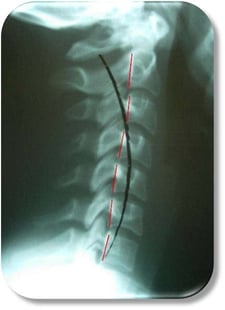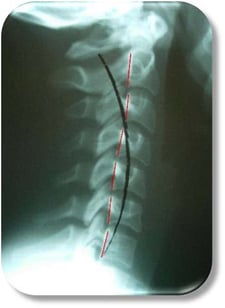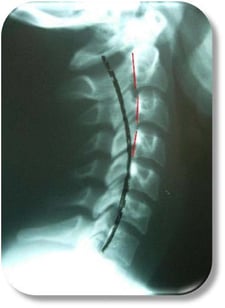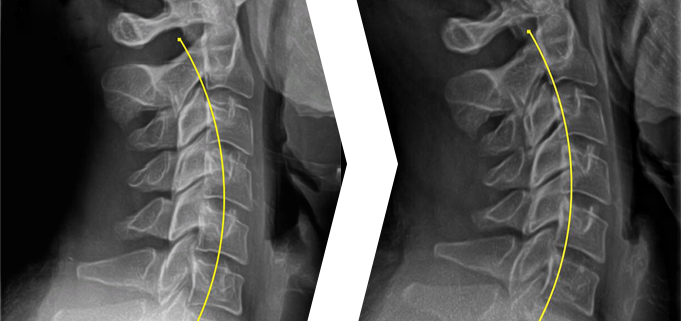Where Have All the Post X-Rays Gone?
This is the sixth blog in the “Take the Lead: Tech Neck to Perfect Posture” series focusing on engaging and challenging doctors around the world to Take the Lead in their communities to begin changing people’s lives by integrating cervical curve remodeling and posture correction into their existing treatment protocols.
Earlier this year I wrote a blog addressing the incredible need for us (chiropractors) to become posture correction experts in the communities we serve in order to battle the rapidly growing tech neck epidemic. As the public becomes increasingly aware of this condition and the various symptoms that accompany it, our profession will continue to be presented with a growing opportunity to help millions of people worldwide enjoy a greater quality of life.
Along with this amazing opportunity comes great responsibility –
-
- The responsibility to objectively evaluate the patient’s spinal structure
-
- The responsibility to provide evidence-based, structural corrective solutions to the patient
-
- The responsibility to objectively evaluate the patient’s post-treatment structural changes
- The responsibility to provide ongoing structural-supportive care to patients in order to ensure the investment they’ve made in their spinal health is protected.
Many of us take pre-treatment x-rays during our initial exams. X-rays give us an opportunity to educate our patients about the importance of healthy spinal structure and its vital role in overall health and well-being. Radiography allows us to objectively establish a “need for care”. It is one of the best diagnostic tools we have and it nearly always supports the need for structural spinal correction. After all, how often do you see a lateral cervical x-ray with a normal lordosis and no forward head posture? Rarely, if ever!
Sadly, as I communicate with more and more doctors I find that we, as a profession, are failing to fulfill responsibilities 2, 3 and 4. We are quick to point out the lack of curve in a patient’s neck in order to “sell” the patient a care plan but how many of us actually take a post x-ray to objectively demonstrate structural improvement to the patient?
The following conversation with new patients in my clinic is all too common:
Me: “Did your previous chiropractor take x-rays of your neck?”
Patient: “Yes. I don’t have a curve in my neck like I should. He/She said that’s why I have chronic headaches and neck pain.”
Me: “Did he/she prescribe specific therapies to restore the neck curve?”
Patient: “Do you mean adjustments? I got adjusted a lot! I also did some exercises and stretches.”
Me: “Did he/she take new x-rays after your treatment plan was completed to show you how much your curve improved?”
Patient: “No.”
Me: “Ok – I’d like to take updated neck x-rays today to determine the structural health status of your neck so I can prescribe the most effective treatment plan for your specific needs. Does that sound reasonable?”
Patient: “Yes, that sounds good. I’d really like to know what’s going on.”
Me (after taking new x-rays): “Well – I think we’ve found a major factor contributing to the return of your chronic headaches and neck pain – You don’t have a curve in your neck. Don’t be discouraged. Most often, we can fix this. The treatment we use in this office includes adjustments, exercises and iTrac® Therapy which is specifically designed to correct straight necks like yours. iTrac® Therapy for neck is similar to orthodontic bracing for teeth – structural alignment correction is the goal.”

For a moment, take off your provider hat and put on your patient hat. Can you empathize with this person?
As you can imagine – when I have these conversations with my patients they are extremely happy they found my clinic and are able to receive the specific care they need (cervical curve remodeling). At the same time, they are incredibly disappointed in my colleagues who recognized and communicated a need but chose not to deliver the results.
As trusted healthcare providers, when we tell the patient they need care using the loss of neck curve evidence as a basis, do we not also have a responsibility to re-measure the curve following a treatment plan to objectively communicate success or failure of the treatment? If your answer is no, you can stop reading, as the remainder of this blog won’t apply to you. However, if your answer is yes, keep reading to learn how I have been successful with cervical curve remodeling in my own clinic utilizing new FDA-cleared technology that provides me with the resources necessary to offer the highest level of care to my patients and gives me the confidence to take post x-rays, knowing that I’ll see structural improvement.
The re-exam conversation that occurs after 4-8 weeks of care typically sounds like this:
Me: Well, it looks like your hard work has paid off. Your neck curve has improved remarkably…Congratulations!
Patient: Thank you so much! I was skeptical at first but now I’m a believer. Being symptom-free right now is great but seeing the dramatic change in my neck curve when I see the two x-rays side by side gives me hope that the symptoms won’t come back!
Me: Exactly! Now, we’ll begin transitioning you into iTrac® maintenance visits so we can protect the investment you’ve made in your health. Maintenance treatment is similar to wearing a retainer after braces are removed – the goal is to maintain the improved structural alignment.”
 |
 |
|
| Pre-Treatment | Post-Treatment |
With iTrac® Cervical Curve Remodeling technology – predictable, measureable and repeatable structural correction can be a reality for your patients too.
iTrac® Therapy is quickly and seamlessly integrated with your existing technique package to provide long-lasting structural correction to your patients, enhancing your treatment outcomes, maximizing your patient’s quality of life and health potential, and giving you the confidence to take post x-rays knowing that you’ll see good change.
You can find iTrac® clinical support information such as case studies, training literature, videos and colleague testimonials at www.fixthecurve.com. For specific clinical questions that aren’t directly addressed within the previously mentioned site, please email me directly by clicking the link below. I look forward to hearing from you.
Original article can be found here.





